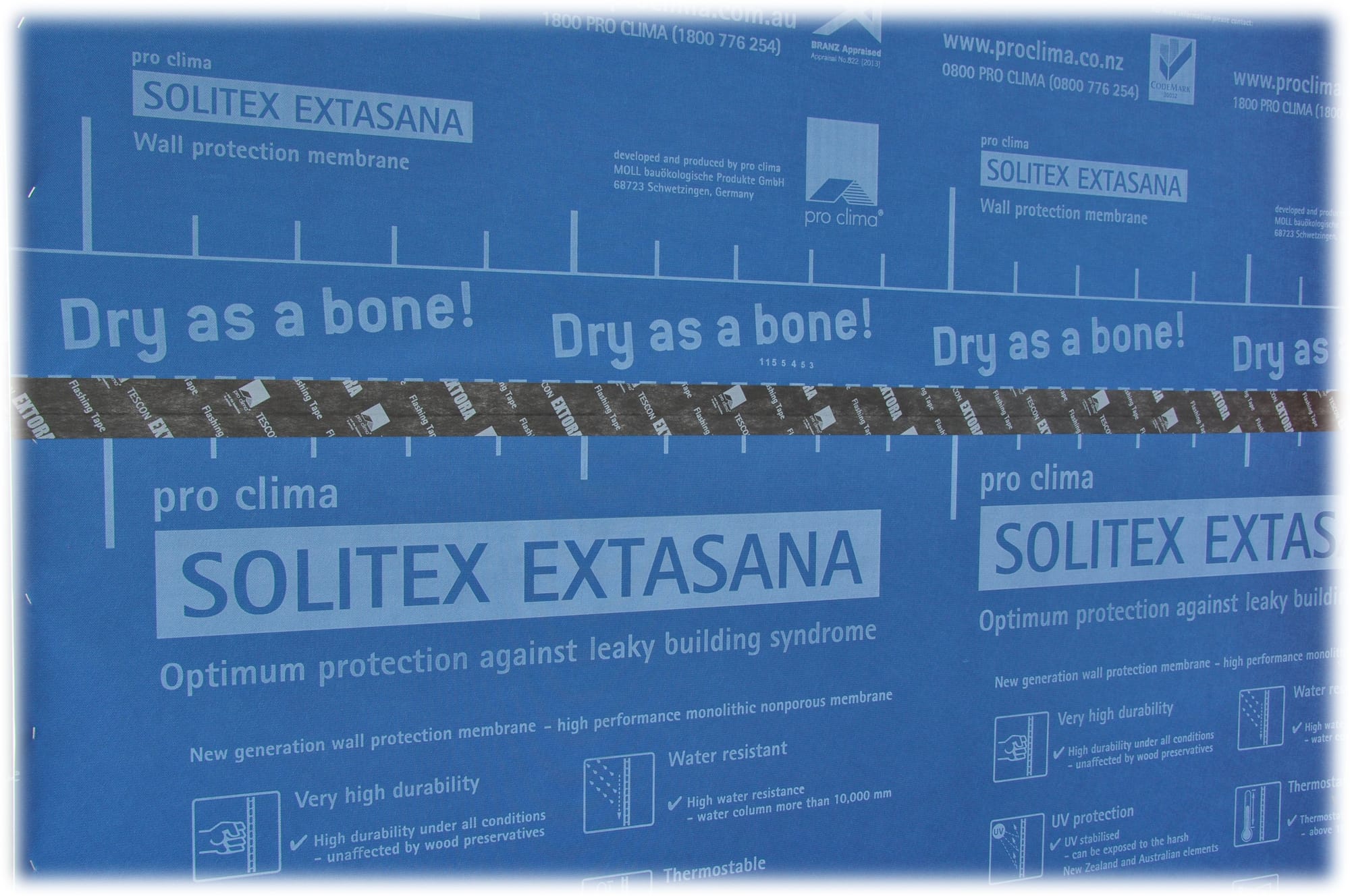When it comes to achieving airtightness in residential construction, many builders in Australia rely on reflective wall wraps. While these products meet basic building code requirements, they often fall short in delivering the airtightness and moisture control needed for true energy efficiency and long-term durability.
In reality, wall wrap alone represents the bare minimum required to satisfy regulations—not necessarily what should be installed to create a comfortable, liveable home. For a home to perform well in terms of thermal comfort and energy savings, builders should go beyond basic requirements and implement comprehensive solutions that address both airtightness and ventilation.
In contrast, the Pro Clima System offers a complete, well-tested solution that outperforms standard wall wraps, delivering superior protection for your home.
We prefer the Pro Clima system for several key reasons.
In this article, we'll explain why it stands out compared to traditional reflective wall wrap.
There’s a significant difference between the two systems, so let’s take a closer look.
The Building Envelope – Is More Than Just Wall Wrap
When discussing airtightness and moisture management, many builders focus solely on installing reflective wall wrap as a one-size-fits-all solution. However, the building envelope is far more complex and requires more than just wrapping the structure to ensure lasting performance.
Wall wrap may provide some insulation and reflective properties, but it is only one piece of the puzzle when it comes to protecting your home from the elements, managing moisture, and maintaining energy efficiency. The our article on "Why Rainscreens are essential for new homes" we highlight the importance of understanding how all the elements of the building envelope work together.

A well-designed building envelope includes multiple layers of protection, each serving a distinct purpose.
Reflective wall wraps, while useful in certain applications, often fail to address key challenges such as preventing moisture infiltration, managing condensation, and ensuring continuous airtightness, especially when poorly installed.
This is where systems like Pro Clima shine—by providing a comprehensive solution that integrates airtightness, moisture control, and durability in ways that basic wall wrap simply cannot.
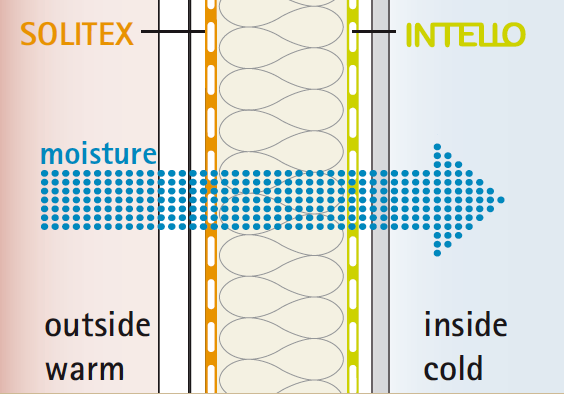
Beyond Wall Wrap: The Role of Rainscreens, Airtightness, and Moisture Management
As discussed in the article on rainscreens, the outer layer of a building envelope needs to work with other components like weather-resistant barriers (WRBs), insulation, and ventilation systems.
A rainscreen, for example, adds an extra layer of defence by allowing moisture that penetrates the exterior cladding to drain away, preventing it from reaching the interior walls. Similarly, an airtight system like Pro Clima offers more than just surface protection; it ensures that air doesn’t leak through gaps and cracks, reducing heat loss and improving thermal comfort.
While reflective wall wrap is often applied in a slapdash manner as a simple barrier, it lacks the ability to actively manage moisture or provide reliable, long-term airtightness.
Builders who rely solely on wall wrap may be leaving homeowners vulnerable to issues like condensation, mould, and energy inefficiencies.
On the other hand, the Pro Clima system, combined with features like rainscreens, ensures a layered, integrated approach that addresses all aspects of the building envelope—air, moisture, heat, and vapour. To read more about the 4 control layers that make up an efficient building envelope, check out our article below titled "Optimising the 4 Control Layers for High Performance Homes."

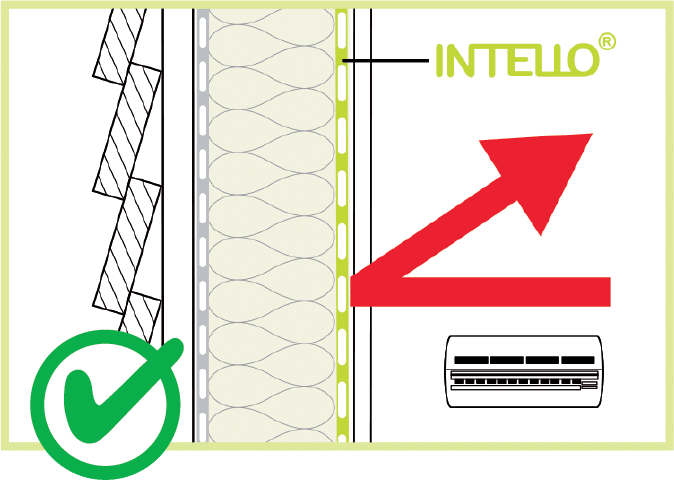
Why Pro Clima and Rainscreens are Essential
The Pro Clima system, with its intelligent moisture management and airtightness solutions, works perfectly alongside rainscreens to create a high-performance building envelope. Together, they help:
- Prevent Moisture Buildup: Rainscreens keep moisture from penetrating the wall assembly, while Pro Clima’s vapour-permeable membranes manage interior moisture and prevent condensation.
- Ensure Continuous Airtightness: Unlike wall wraps, Pro Clima’s tapes, membranes, and adhesives ensure a complete seal, preventing air leaks that can compromise energy efficiency.
- Promote Long-Term Durability: By integrating airtightness and moisture management, you protect your home’s structure from deterioration, reducing maintenance costs and improving comfort.
Focusing solely on wall wrap oversimplifies the complexity of the building envelope.
By incorporating comprehensive solutions like the Pro Clima System and rainscreens, you ensure that your home is not only protected from external elements but also capable of managing moisture and air movement in a way that ensures energy efficiency and long-term performance.
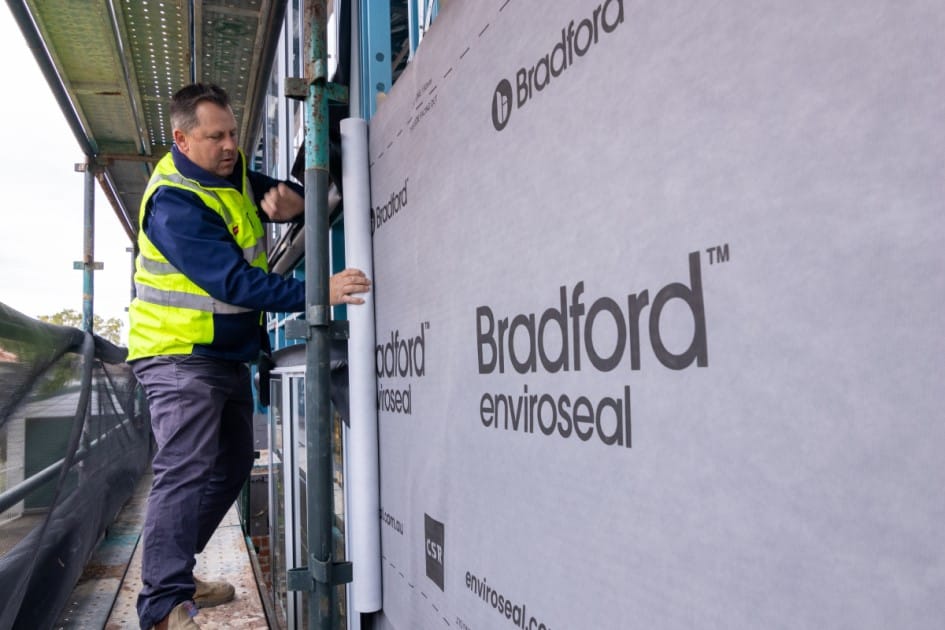
The Limitations of Reflective Wall Wrap
Many residential project builders in Australia rely on reflective wall wrap because it is easy to install and meets minimum compliance requirements. Reflective wall wraps are designed to reflect radiant heat, offering some level of insulation and vapour control.
However, the way they are often installed, as highlighted in our article on "The Right Way to Install Wall Wrap According to Australian Standards" see below, raises several concerns:
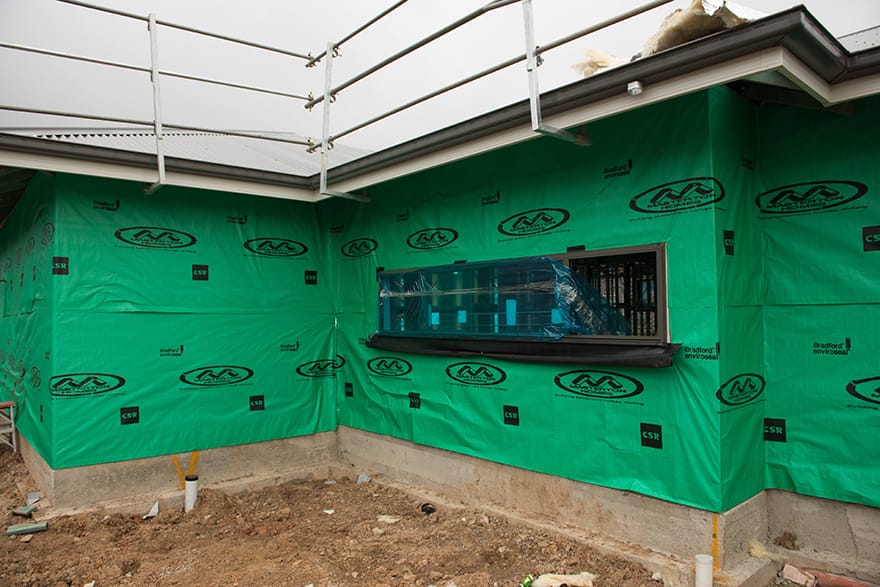
- Inconsistent Airtightness: Builders often install reflective wall wrap as a quick, inexpensive solution, but it doesn’t always create a continuous, airtight seal. Gaps and tears can form if not installed properly, particularly around penetrations, such as windows, doors, and services. The typical installation process, which involves overlapping sheets and stapling them to the frame, leaves room for air leaks that compromise the thermal envelope.
- Minimal Moisture Management: Reflective wall wraps are primarily designed for vapour resistance rather than active moisture management. In high humidity or areas prone to condensation, these wraps can trap moisture inside the wall cavity, increasing the risk of mould and structural damage over time. This makes them less suitable for homes where managing moisture is critical.
- Limited Performance Testing: While reflective wall wraps meet basic Australian Standards, they often lack the rigorous performance testing and certifications associated with higher-end systems like Pro Clima.
- Builders may slap them on as a quick fix, but this doesn't guarantee long-term performance, particularly in climates with extreme temperature variations or high moisture levels.
Why Pro Clima Outperforms Reflective Wall Wrap
The Pro Clima System offers several advantages over standard reflective wall wraps, particularly when it comes to airtightness, moisture control, and long-term durability:
- Complete Airtightness Solution: Unlike reflective wall wraps that rely on overlapping and stapling, the Pro Clima System uses a range of tapes, membranes, and adhesives that create a continuous, airtight barrier. Products like TESCON EXTORA® and TESCON VANA® tapes seal joints and penetrations with superior adhesion, preventing air leakage around windows, doors, and other openings. This ensures a far more consistent airtightness throughout the building envelope.
- Better Moisture Management: One of the key benefits of the Pro Clima system is its ability to actively manage moisture. Products like INTELLO® PLUS offer intelligent moisture control by adapting to varying humidity levels inside the home. This prevents condensation from building up within the wall cavity, a common problem with standard reflective wraps. The SOLITEX EXTASANA® weather resistive barrier, for example, allows vapour to escape while still protecting the building from external moisture, reducing the risk of mould growth.
- Tested for Extreme Conditions: Pro Clima products have been rigorously tested and used in Europe, where airtightness standards are among the highest in the world. These systems are built to perform in a wide range of climates, from humid coastal areas to cold alpine regions. They are also tested for UV resistance and durability, ensuring they last the lifetime of the building. In contrast, reflective wall wraps, while compliant with Australian Standards, are not subject to the same level of performance scrutiny.
- Longevity and Durability: The Pro Clima System comes with a 100-year warranty on adhesion, giving home owners peace of mind that their investment will last. Reflective wall wraps, in contrast, may degrade over time, especially if exposed to harsh conditions or if improperly installed. This can lead to air leaks, loss of thermal performance, and increased maintenance costs.
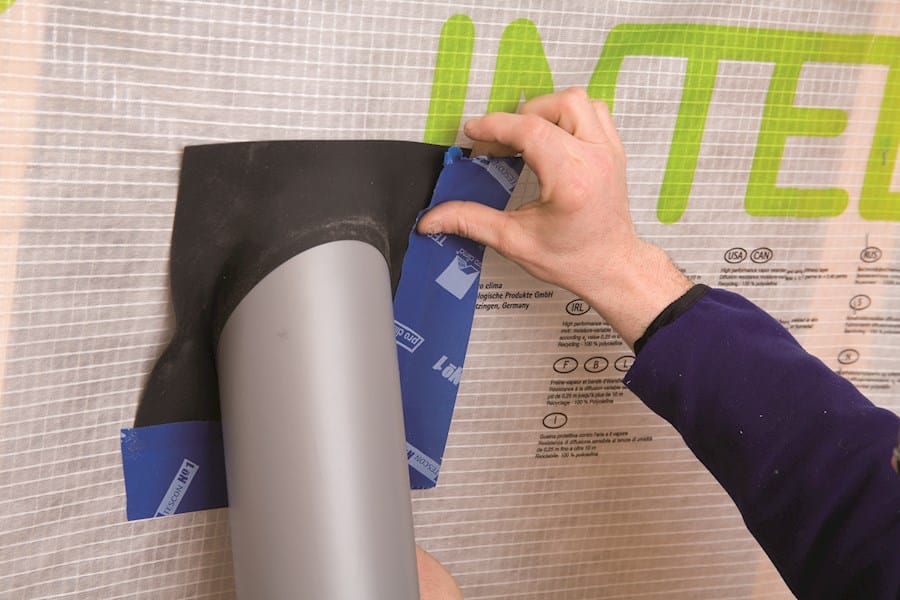
Installation Comparison: Pro Clima vs. Reflective Wall Wrap
The installation process for Pro Clima is more precise and requires attention to detail to ensure airtightness. In contrast, many builders install reflective wall wrap in a quicker, less precise manner, often skipping critical steps that ensure long-term performance.
If you would like to understand why builders choose the fastest methods, check out our our article on the "Holy Trinity of Construction" - Time, Cost & Quality to understand how these elements are interconnected and why pursuing one over another means certain trade offs.

- Reflective Wall Wrap Installation: Typically involves rolling out the wrap, stapling it to the frame, and overlapping the seams. While reflective wall wrap can provide some level of protection, gaps and improper sealing around edges and penetrations are common issues that lead to reduced effectiveness.
- Pro Clima Installation: Every joint, seam, and penetration is carefully sealed with airtight tapes, ensuring no leaks. Pro Clima also offers spray-on airtightness solutions, such as AEROSANA® VISCONN, which are ideal for sealing hard-to-reach areas and complex building junctions. This attention to detail ensures maximum airtightness and moisture protection.
Conclusion
While reflective wall wraps may meet the minimum standard for Australian homes, the Pro Clima system provides a superior solution for home owners looking for long-term airtightness and energy efficiency.
By choosing Pro Clima, you ensure that your home remains comfortable, energy-efficient, and protected from the risks of moisture and air leaks for decades to come. The system’s proven performance in Europe and its adaptability to Australian climates make it the best choice for those seeking a high-quality, reliable solution for airtightness.
FAQS
What is the Pro Clima System?
The Pro Clima System is a complete airtightness solution designed to improve energy efficiency and moisture control in residential construction. It includes a range of tapes, membranes, and adhesives that create a continuous, airtight seal around a home’s building envelope, helping to prevent air leaks and moisture buildup.
How does Pro Clima differ from reflective wall wrap?
Reflective wall wrap meets basic building code requirements but often falls short in providing long-term airtightness and moisture control. The Pro Clima System offers superior performance by integrating a range of products designed to create an airtight barrier while allowing moisture to escape, ensuring better energy efficiency and durability.
Why is airtightness important in residential construction?
Airtightness is crucial because it reduces air leaks, which are responsible for significant heat loss in homes. Proper airtightness ensures that conditioned air stays inside, improving thermal comfort and reducing energy costs. Poor airtightness can also lead to condensation and mould problems.
What role does moisture control play in airtightness?
Moisture control is essential in airtight homes to prevent condensation buildup inside walls, which can lead to mould and structural damage. Pro Clima products, such as vapour-permeable membranes, allow moisture to escape while maintaining an airtight barrier, protecting the home’s structure.
Can Pro Clima be used in retrofitting projects?
Yes, the Pro Clima System is suitable for both new builds and retrofitting projects. Its range of products, including airtight tapes and spray-on airtightness solutions, can be applied to existing homes to improve airtightness and energy efficiency without the need for extensive renovations.
What are the long-term benefits of using Pro Clima over reflective wall wrap?
The Pro Clima System provides long-term airtightness, superior moisture management, and a 100-year warranty on adhesion. Unlike reflective wall wraps, which may degrade over time, Pro Clima ensures that homes maintain high levels of energy efficiency and thermal comfort, reducing the need for future repairs and maintenance.
How does Pro Clima perform in different climates?
Pro Clima products are tested for durability and performance in various climates, including extreme temperatures and high UV exposure. This makes the system adaptable for Australian homes, providing reliable protection in both humid coastal areas and dry, hot regions.
What is Air Changes Per Hour (ACH), and why is it important?
ACH measures how many times the air inside a building is replaced within one hour. A low ACH value indicates better airtightness, which helps maintain indoor temperature and reduces energy consumption. The Pro Clima System helps achieve a low ACH, improving the overall efficiency of a home.
Does Pro Clima improve indoor air quality?
Yes, by preventing uncontrolled air leaks and using vapour-permeable membranes, Pro Clima helps maintain good indoor air quality. It allows for controlled ventilation, reducing the buildup of pollutants, moisture, and allergens inside the home.
How does Pro Clima compare in terms of cost-effectiveness?
While Pro Clima may have a higher initial cost than standard reflective wall wrap, its superior performance in airtightness and moisture control leads to long-term savings through reduced energy bills and lower maintenance costs, making it a cost-effective investment for home owners.


